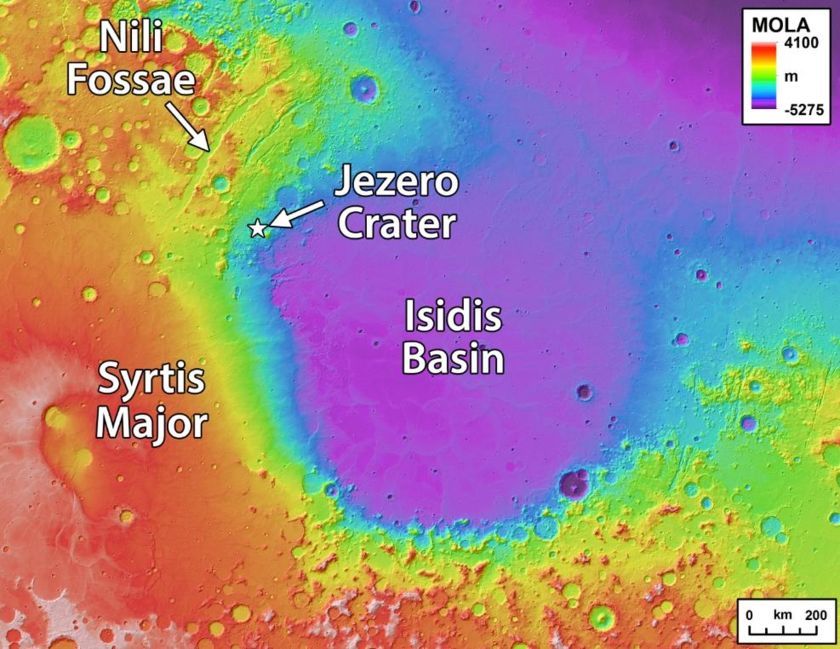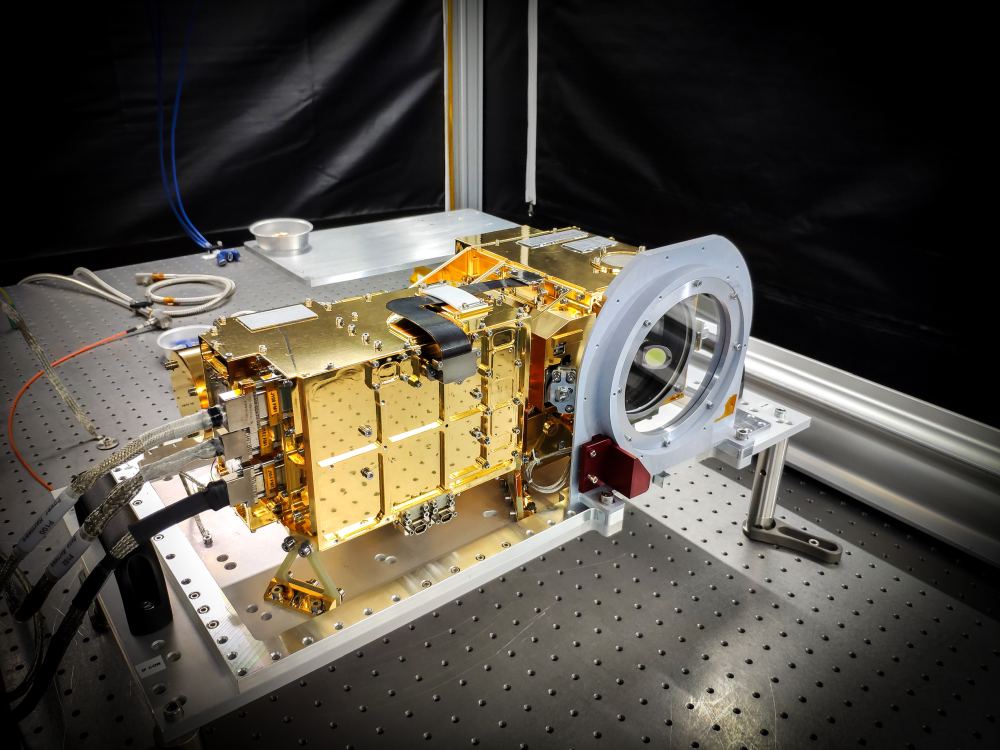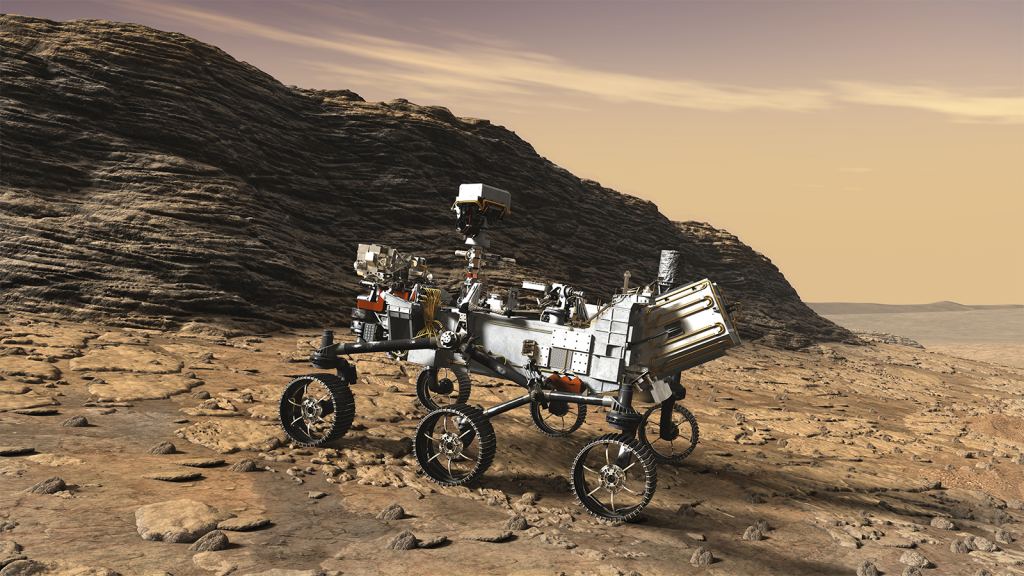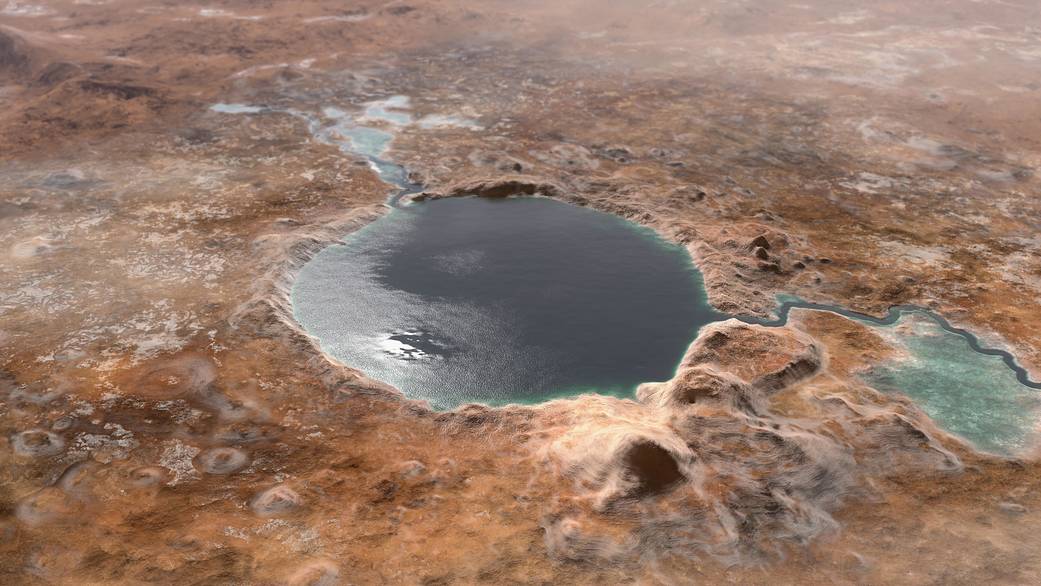Today is a milestone in NASA’s Perseverance mission to Mars. At 1:40 pm Pacific time today, the rover will have traveled 235.4 million km (146.3 million miles). That means the spacecraft is halfway to Mars and its rendezvous with Jezero Crater. The spacecraft isn’t traveling in a straight line, and the planets are moving, so it’s not equidistant to both planets.
“Although we’re halfway into the distance we need to travel to Mars, the rover is not halfway between the two worlds,” Kangas explained. “In straight-line distance, Earth is 26.6 million miles [42.7 million kilometers] behind Perseverance and Mars is 17.9 million miles [28.8 million kilometers] in front.”
But today’s still a good time to take another look at Jezero Crater, and why NASA chose it as the mission’s target.
The Perseverance rover has four overall objectives. The main two are to search for environments that could’ve supported microbial life in the past and to search for evidence of that life. The other two objectives are to cache samples for later return to Earth by another mission, and to test oxygen production from the Martian atmosphere in anticipation of future human missions to Mars.
Jezero Crater was chosen because it can hopefully support the first two objectives especially well. The Crater is a paleolake, meaning that it was filled with water at one time in the distant past. It was probably several hundred meters deep and about 40 km (25 mi) in diameter. Researchers think it may have filled with water on two separate occasions. They also think that Jezero Crater was full for a long time and that the delta took 106–107 years to form. The lake and the channels that fed it were so long-lived that there may be up to 1 km of sediment on the bottom.

When NASA selected Jezero Crater in 2018, the scientific case was strong. It’s only grown stronger since then. Along with the preserved sediments and river delta, there are five different types of rock the rover can sample. Some of the features at Jezero are estimated to be 3.6 billion years old. That’s near the beginning of Mars’ Noachian period, which began between 4.1 and 3.6 billion years ago. The Noachian is when liquid water flowed over the Martian surface, creating networks of river valleys. Oceans and large lakes may have been present at the time.

Perseverance will be looking for signs of ancient microbial life. It has a suite of powerful science instruments to do that. It carries a ground-penetrating radar, several different types of spectrometers, and a host of cameras.
The rover is really a collection of several robots working together. One of them is the 2 m long (7 ft) robotic arm mounted on the front of the Perseverance Chassis. It has a rotary percussive drill that can collect core samples for return to Earth. The sample return portion of the mission is complicated and will be the first samples collected from another planet if all goes well.
Perseverance is equipped with 43 sample tubes, and the mission’s goal is to collect at least a dozen samples. It’ll leave the samples in a central location for retrieval by a future mission.
But Perseverance will do important analysis on its own as well. Its SuperCam instrument, an upgraded version of the Curiosity rover’s ChemCam, will use lasers and four sensitive spectrometers to identify potential chemical biosignatures in rocks and debris. And it can do that at a distance, making the rover remarkably flexible. SuperCam can identify the chemical and mineral makeup of targets as small as a pencil point from a distance of more than 7 meters (20 feet). Among other things, it can identify “soil” types that are more likely to preserve ancient samples.

But all of that scientific inquiry is still a ways off. The spacecraft still has about four months of travel until its projected landing on February 18th. But that’s okay; it’s not like Jezero Crater is going anywhere or changing in any significant way.

This artist’s concept shows a close-up of NASA’s Mars 2020 rover studying an outcrop of layered sedimentary rock. Image Credit: NASA/JPL-Caltech
Once the rover reaches Mars, it still has to land. And landing on Mars is not easy and is probably the most challenging and dangerous part of the mission.
But when it arrives, and if it can stick its landing, Perseverance may very well go down in history as the mission that discovered solid evidence of life elsewhere.
More:
- Press Release: Jezero Crater Was a Lake in Mars’ Ancient Past
- Chemistry World: Perseverance rover’s suite of chemical tools will search for signs of ancient life on Mars
- Universe Today: NASA’s Perseverance Rover is Going to Jezero Crater, Which is Looking Better and Better as a Place to Search for Evidence of Past Life on Mars

